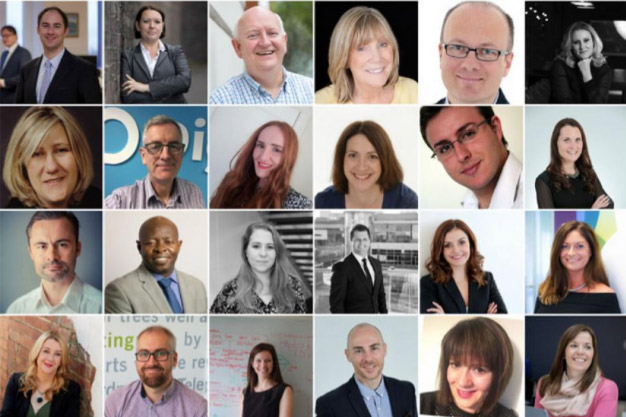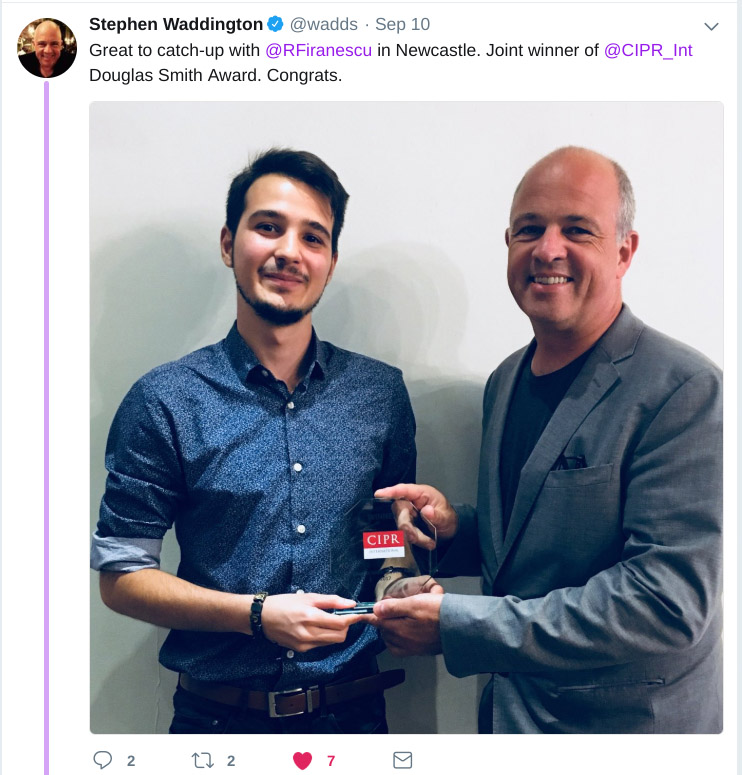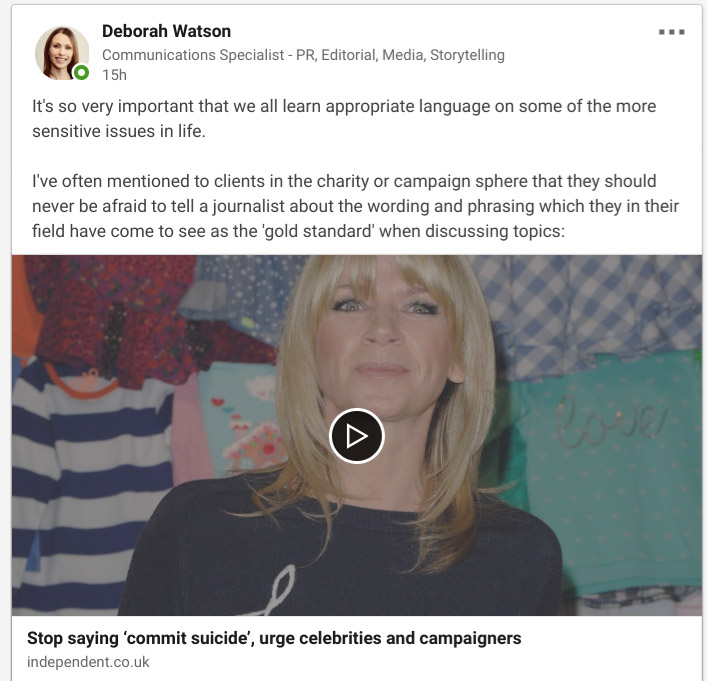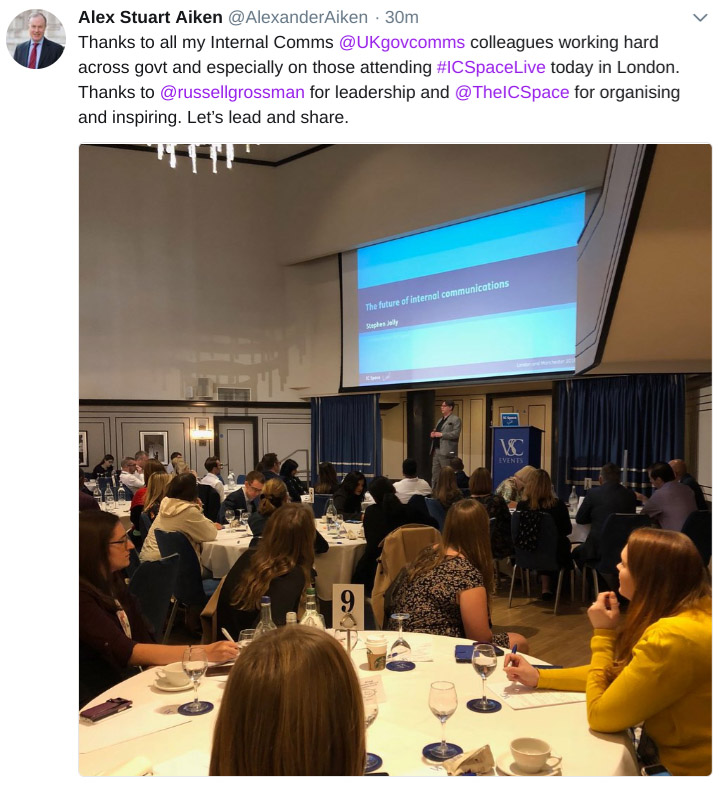This week in PR (14 September)

About the author
Richard Bailey Hon FCIPR is editor of PR Academy's PR Place Insights. He teaches and assesses undergraduate, postgraduate and professional students.

Behind the headlines

Faces from the #GetChartered campaign
- British Airways data breach: This looked like being one of the stories of the week, but it’s fallen quiet. What went so well for BA’s public relations? The Financial Times sees it as a successful test of the General Data Protection Regulation (GDPR).
- AMEC has announced that Johna Burke, CMO at BurrellesLuce, will be its new Global Managing Director, succeeding Barry Leggetter at the end of the year. She was chosen from over 100 applicants for this role.
- The CIPR has awarded Chartered Practitioner status to: Aamir Abassi, Bridget Aherne, Farzana Baduel, Jenni Field, Liz Fullick, Philip Gibson, Judith Green, Karen Hyde, Sally Keith, Brooke Kenyon, Naj Modak, Christopher Newstead, Aisling O’Connor. Kerry Sheehan, Helen Smith and Andrew Stronach.
- PRCA Southeast Asia launched in Singapore on 12 September
- Young communicators shortlisted for the PRCA Reginald Watts essay prize: Olivia Butcher, Grace MacDougall, Liz Moore, Sophie Payne, Thomas Roden, Claire Simpson.
- We learn a new perspective on the PRCA’s decision to expel Bell Pottinger a year ago. Francis Ingham has told PR Week that he received threats through social media and on the doorstep ‘over a sustained period.’ Holmes Report (article behind paywall) reviews the business and ethical repercussions of the collapse of Bell Pottinger one year on.
- The other sports story of the week with public relations implications: Serena Williams may have lost the US Open tennis final, but she is winning the public relations battle, according to The Telegraph.

Insights and opinions: Pick of the posts
These are the editor’s pick of posts about public relations this week (UK focused, but with a global outlook). Recommendations are welcome to editor@prplace.com or @pr_place
Consulting, careers and skills
- Heather Yaxley and Nigel Sarbutts: Addressing the talent challenge in PR – finding stability in volatile times (13 September)
‘My research also shows that the idea of a binary career choice of working either in-house or in consultancies is simplistic. The industry offers three main employment options, yet little attention is paid to self-employment or independent practice.’ - John Lehal: Looking back before I move forward (9 September)
‘Launching, growing, then selling a consultancy has been a terrific experience, and one I wouldn’t hesitate in recommending to anyone ambitious and hard-working.’
Politics and public affairs
- Laura Blake: APPC/PRCA Merger: “Lobbying Industry must speak with Single Voice” (12 September)
‘Pragmatically, I support the [APPC-PRCA] merger because in the long term, I think it makes sense for our businesses, our clients and our sector.’ - Stuart Thomson: The politics of infrastructure has changed… for the worse (11 September)
‘The announcement of Crossrail’s delay and cost overruns have been accompanied by ongoing media stories about similar issues with HS2. Such failures will undermine political and community support for infrastructure projects and something has to be done.’ - Will Mapplebeck: It’s party time… (9 September)
‘Party conference season is around the corner and it’s the equivalent of Christmas for anyone involved in political communication – loads of work and a nagging sense of disappointment when it finishes.’ - Angie Moxham joins the debate re the PRCA ‘merger’ with the APPC (9 September)
‘I have always liked the phrase ‘clear blue water’ between the lobbied and the lobbyists, with no financial relationship at all. This is critically important. I would worry that subsuming the APPC into the PRCA, with its much broader membership, would simply muddy the waters and potentially over time lead to dilution of ethical standards.’
Ethics and professionalism
- Mike Love: Is corporate conscience a role for PR? (13 September)
‘PR people wouldn’t be in PR if they couldn’t tell a great story, but not everybody in PR pauses to invest time in finding out why an organisation does what it does and to tell the right story in the right way to the right people – for the right reasons. Asking “why?” is the most important question.’ - Dan Gerrella: Why I became a Chartered PR practitioner (13 September)
‘Since I became Chartered it has given me a boost. It has given me a foundation that I can always refer to and built my confidence. It has consolidated my thoughts on practice and helped me develop new and better ideas.’ - Sarah Hall: How public relations can help bridge the divide in society (13 September)
‘Times of turbulence and challenge present opportunity and life today presents an unrivalled one for the modern communicator. As one of the CIPR’s founders Sir Tim Traverse-Healy wrote reflecting on the inauguration of the Institute 70 years ago: “To be correctly termed, public relations had to contain three elements in almost equal measure: truth, concern for the public interest and dialogue.’ - Amanda Coleman: A little issue of ethics (12 September)
‘Earlier this week I discussed ethics and PR with a range of professionals. There was a universal recognition that we have to reclaim our position and operate to the highest standards. The future of the profession depends on it.’ - Alan VanderMolen: Market Caps and Ethics Scraps: Brands in Motion 2018 (12 September)
‘Are technology companies and innovative brands facing a mounting Luddite revolt? Not anytime soon.’
Public sector
- Lucy Denton: The (comms) strategy is delivery (11 September)
‘A comms team isn’t held to lofty rhetoric about the team’s purpose or goals or expectations. A comms team is, and always has been, judged by its delivery and the impact this has on the institution (preferably for the better). Plainly put: people only want to see the ‘thing’.’ - Dave Glanville: Comms 3.0 – become part of the future or be part of the past (7 September)
‘Comms is both science and art, but the balance of these has been in the art side for too long and now we need more insight – data and research – to enable us to be more effective and impactful in local government communications.’
Gender and diversity
- Claudia Moselhi with Elizabeth Bananuka: The Female Focus Series: Elizabeth Bananuka (12 September)
‘I started thinking about the diversity issue in 2015 when I attended a panel event on global communications and international development. I was the only black person in an audience of more than 100 white comms professionals. It struck me that there was a real disconnect and underrepresentation of ethnic minorities in the industry.’
Crisis and reputation: Nike
- Mark Borkowski: Everybody’s talking (7 September)
‘Traditionally politics has always been bad for business but things are changing and as consumers we make a choice as to whose side we are on.’ - Richard Edelman: A reputation win for Nike (7 September)
‘The decision by Nike to feature former NFL quarterback Colin Kaepernick in its new ‘Just Do It’ ad campaign is more than a brand play, it has significant long-term benefits for Nike’s corporate reputation.’
Influencer marketing
- Scott Guthrie: London Fashion Week influencer marketing: getting it right (13 September)
‘The size of audience for best-performing high-end fashion influencer marketing posts? Fewer than 10k. And, by a country mile. These micro influencers typically earn an engagement rate on their sponsored work of around 8.6% Whilst those with a following of 25k-100k generate just 3.7%.’ - Jake O’Neill: Is your influencer marketing ethical? (10 September)
‘Several influencers have told us how some PRs insist that they do not disclose collaborations or incorrectly label links. Similarly, some influencers allegedly break the rules, whether by buying followers or mislabelling social posts in order to increase engagement.’
Campaigns and creativity

- Colin Cather: Moving pictures (no date)
‘For our clients, we use empathy maps to try and get closer to the audience – the emotional territories, the ‘pains’ and ‘gains’ of the real people we want to reach.’ - Orlagh Shanks: Is Controversial Cosmopolitan Cover Star Tess Holliday Glorifying Obesity or Portraying a New Idea of Beauty? (12 September)
‘When I first saw the cover of the October issue of Cosmopolitan featuring plus-size model Tess Holliday, I was taken aback. This was something very new, featuring someone of this size on the cover, and I knew instantly that the cover would spark mass debate around the country.’
Internal communication

- Alissa Burn: Make your next internal communications video a blockbuster (12 September)
‘When you’re planning your message, make sure you’re thinking about it as a script, or storyboard, instead of blocks of text. Think visually, and ask yourself if it still works in that format.’ - Rachel Miller with Eleanor McManus: What are the benefits of having or being a mentor? (11 September)
‘We all know the theory behind mentoring – that by bringing together less-experienced professionals with industry experts, everyone gains – but how does it actually work in practice?’ - Lauren McMenemy: Content Marketers Don’t Have a Monopoly on Business Storytelling: Internal Comms Is Getting in the Game, Too (11 September)
‘Grant Thornton is taking it seriously: “We made the conscious decision to build an internal newsroom environment that tells the story of our strategy through the collectives stories of our people who are delivering it. So, whether it’s leadership profiles, pitch successes, marketing campaigns, or new product launches, we consistently apply a strong personal filter that helps our content resonate with people across all levels of the organization.”’ - Alex Malouf with Ophelie Janus: Creating an Employee Social Advocacy Program [podcast] (6 September)
‘For us, B2B at Siemens is really about human achievement, so we really focus on how to tell our employees’ stories. Social advocacy empowers employees to become brand ambassadors.’
Media and digital
- Yana Miladinova: In an age of revolution in digital communications, how would you define ‘Public Relations’? (13 September)
‘In an age of revolution in digital communications, Public Relations is (should be) a strategic management discipline that builds a positive reputation and public image via engaging storytelling on multiple traditional and digital channels.’ - Stephen Waddington: Admins and moderators are the wrong target to tackle social media abuse (13 September)
‘Social media community expert Richard Millington suggests Lucy Powell’s proposed bill to clean up private Facebook communities is flawed.’ - Paul Blanchard with Alan Rusbridger: Looking back at the highs and lows of two decades in the editor’s chair [podcast] (13 September)
‘It was great being a journalist in those days: we were the trusted experts. But that’s not the world we live in. The challenge for journalists is how to fit into this new ecosystem. What is the public interest we’re trying to serve? How can people trust us? How can we provide a guide to the things that matter?’ - Paul Sutton with Neville Hobson: Emerging technologies in communications [podcast] (12 September)
‘Today’s show is a fascinating and eye-opening look at what’s just around the corner for communications professionals.’ - Marcel Klebba: On sharing life – and not actually living it (9 September)
‘Likes is another interesting aspect of our era. We strive for them, we need them more than we need air. It’s our fuel. We’re happy when we get lots, we overthink what went wrong when we don’t reach our nebulous target of hits.’ - Vassilena Valchanova: How to Write a Killer Blog Post? The 11-Step Process I Perfected by Publishing 750,000 Words (8 September)
‘Writing starts with hundreds of pages read. A bunch of topics simmers over low heat in your brain until something sparks the nuclear explosion of a blog post idea.’